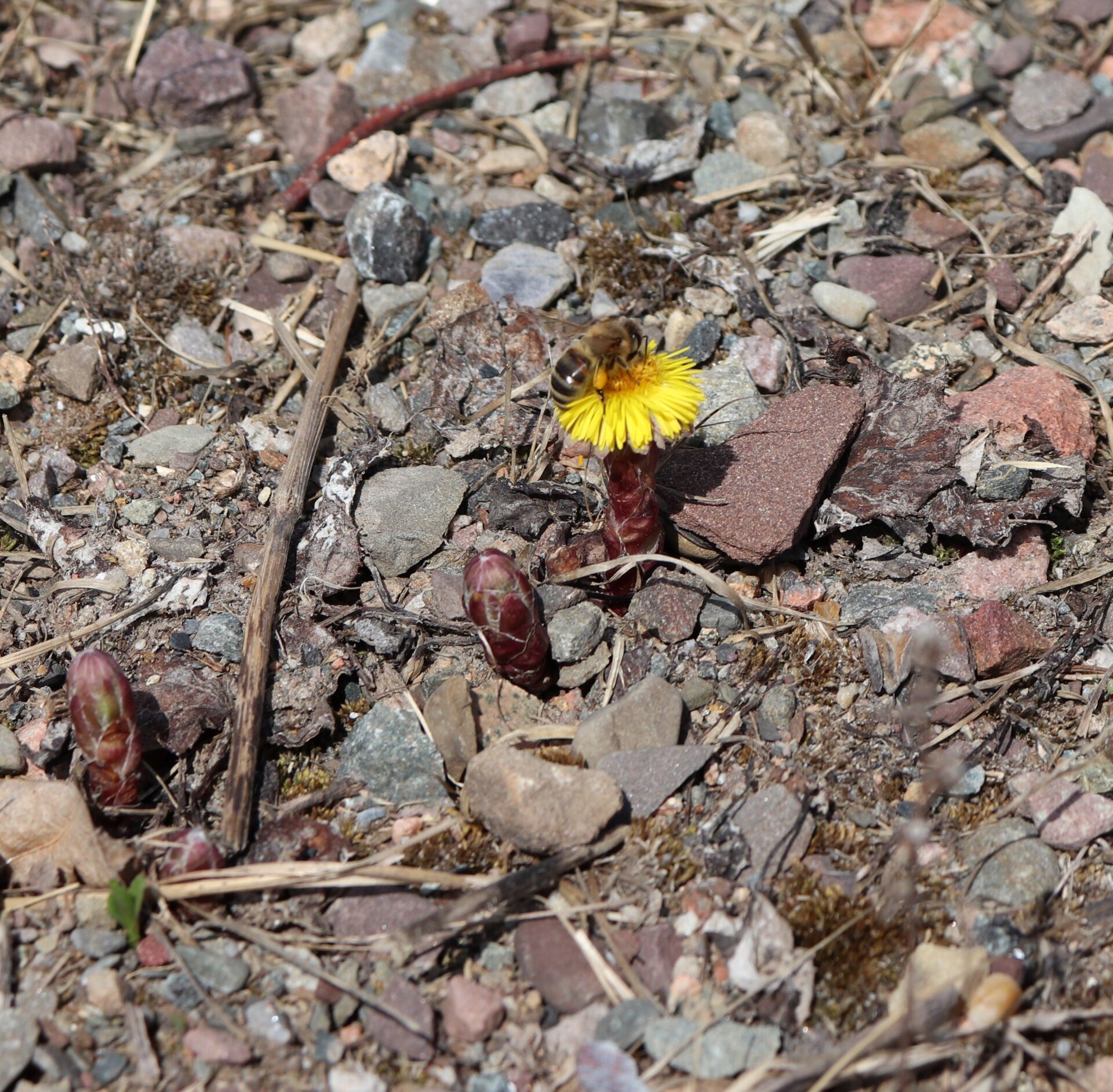Night in this World, a Journey – Part V
It’s the early days of spring here in Nova Scotia. The ground lies wet, brown, and bare. Days are often cool and windy. The first wildflower to bloom – little Coltsfoot, which opens a bright yellow face before it grows leaves– has just appeared along the road like dots of sun.
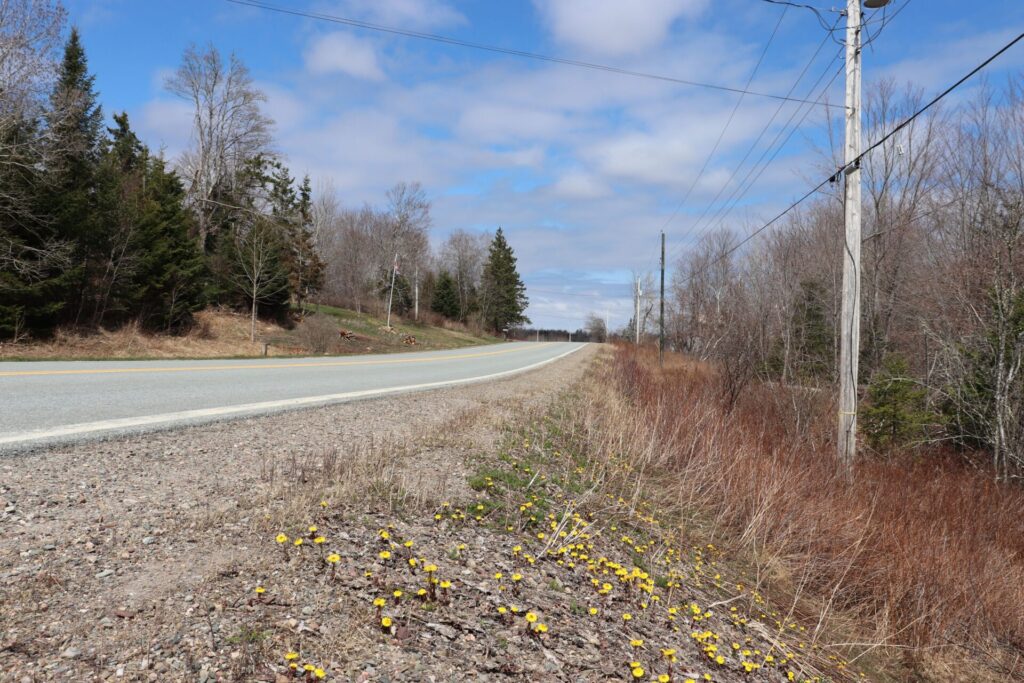
Now when the land is so open, and one can wander most freely, I’m finding all kinds of surprises. In the meadow behind the house, my foot fell on glass: a whole midden of waste, including an old kettle, lay under the matted grass that peeled back like skin. Our roadside ditch holds plastics, cans, garbage. In the woods behind Grandfather Ash, I found the bones of a car.
These discoveries feel in line with a theme of these past few months, when I kept noticing all the paths that became visible in winter: the straight, shallow lines of common animal routes through the woods; serpentine watercourses; steep-sided road ditches; faded lanes; plough cuts; and fence and tree lines marking the boundaries of fields, across which the tracks of deer, grouse, coyote, raccoon and others were held like ink marks on paper by the snow. Before green covers the land, winter and early spring are times of exposure, when we see further into.
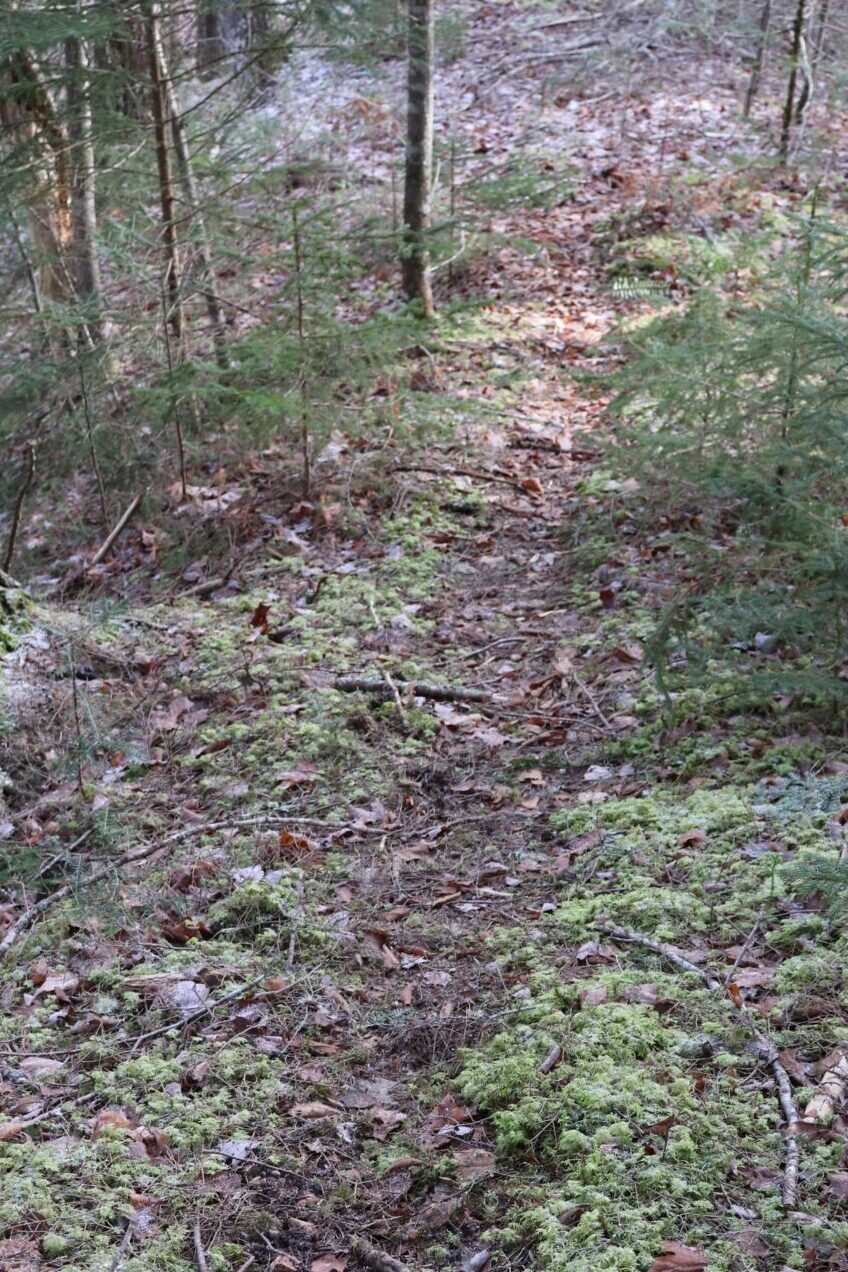
In The Old Ways, a book about slow journeys along ancient human routes, Robert MacFarlane observes how “the eye is enticed by a path, and the mind’s eye also. The imagination cannot help but pursue a line in the land—onwards in space, but also backwards in time to the histories of a route and its previous followers.” As I followed the paths revealed this winter, whatever their age or purpose, I felt instinctively that I was learning about the land, its history, and the creatures here. Perhaps this is knowledge that comes through the feet, and why MacFarlane describes walking as a way “of feeling, being, knowing.” It’s also a way of making relationship with where we are. Perhaps, as we shake hands with other humans, we greet the world with our feet.
* * *
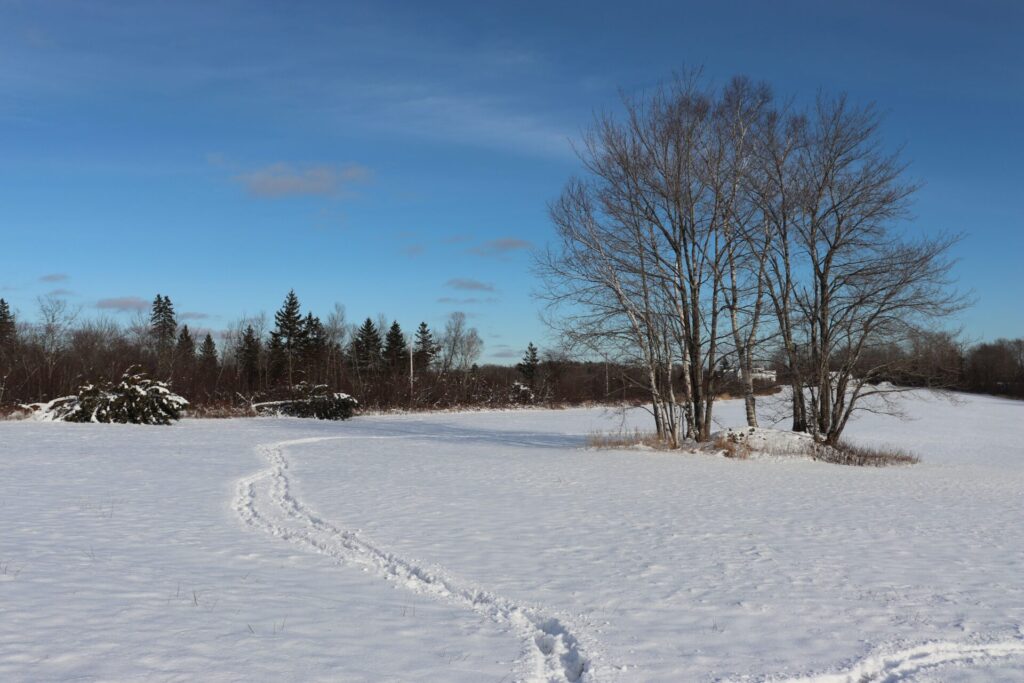
Over winter I’ve also been reflecting on the invisible—yet just as real—paths and markers of history within us. For three or four years, I’ve been working to change lifelong postural habits that keep causing me painful problems. It’s not an exaggeration to say that I’m learning to stand. This winter, I’ve finally had a breakthrough.
For many of us, I think, our bodies become over time the terrain we move through and see like land blurring past the car windows. Oh, there’s that familiar bump, that dip, that funny bend. As I child I had falling arches and knock knees, wore custom-made shoes; as a teen who grew rapidly tall, there was back pain and a diagnosis of a curved spine. Orthodics in my 20s, extreme bouts of bursitis and tendinitis later. In my body, certain pathways from tendon to joint, muscle to limb, have for long years operated under strain. Like communication jams. Blocked passages. There are strange segregations and fence lines, dark whirlpools, stagnant zones, even swathes of cement. A massage therapist really told me that once: as I started to get better, he reported with cautious satisfaction that the cement had altered to something like wood.
Learning to move in healthful ways feels like untangling a hundred strings knotted together by a maniac. A maniac who did this decades ago, and left me with this problem.
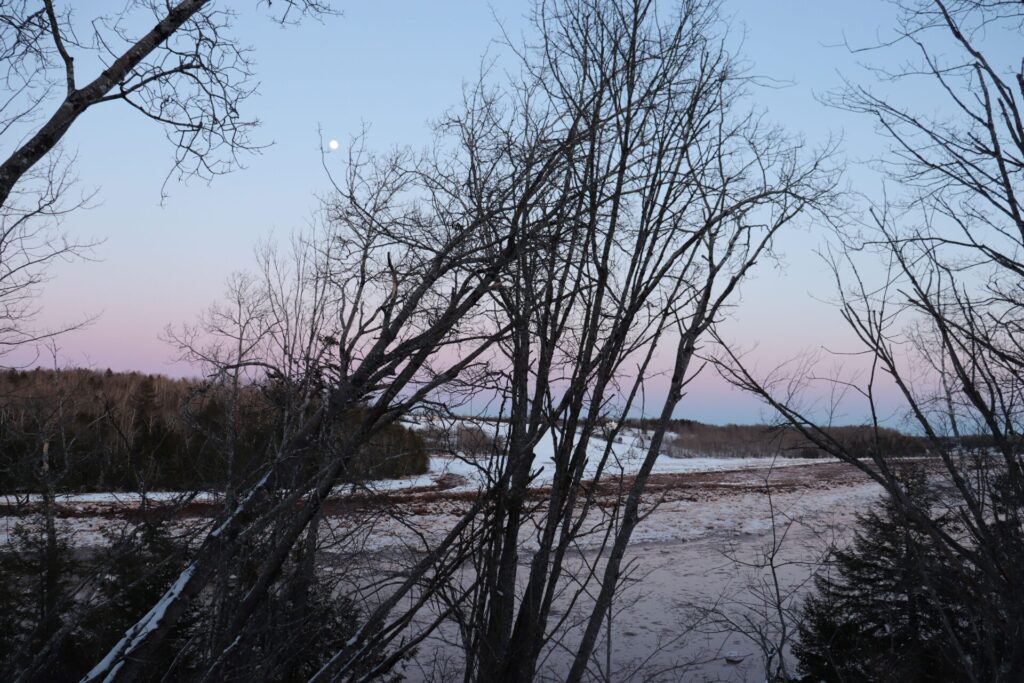
My personal trainer, an adept of Chinese internal arts, calls this process repatterning. He’s the field guide who insists I slow down the car-window blur. He shows me how to approach, observe, sense. As I do, bending or reaching or breathing slowly, all kinds of shit comes to light: it’s humbling to realize that you can’t raise an arm without wincing, or a leg without twisting. And I almost always reach a moment when what he’s asking for feels impossible. He calls this maelstrom: the chaos moment. The moment of reckoning. Exasperated and confused, sometimes feeling physically ill, I just want to stop.
Then the amazing happens: a shift, a connection. I can move that way, sort of. The whirlpool starts to flow into the stagnant zone, my limbs to harmonize. Foundational relationships, long abandoned, are unearthed again. Restoration is possible—it’s already begun.
For the first time in memory, I can stand with my feet close together and not feel like I’m going to fall over; the bow-legged posture of a lifetime is almost gone. Turns out it was never inevitable, and this child who got bent out of shape early does not have to remain so.
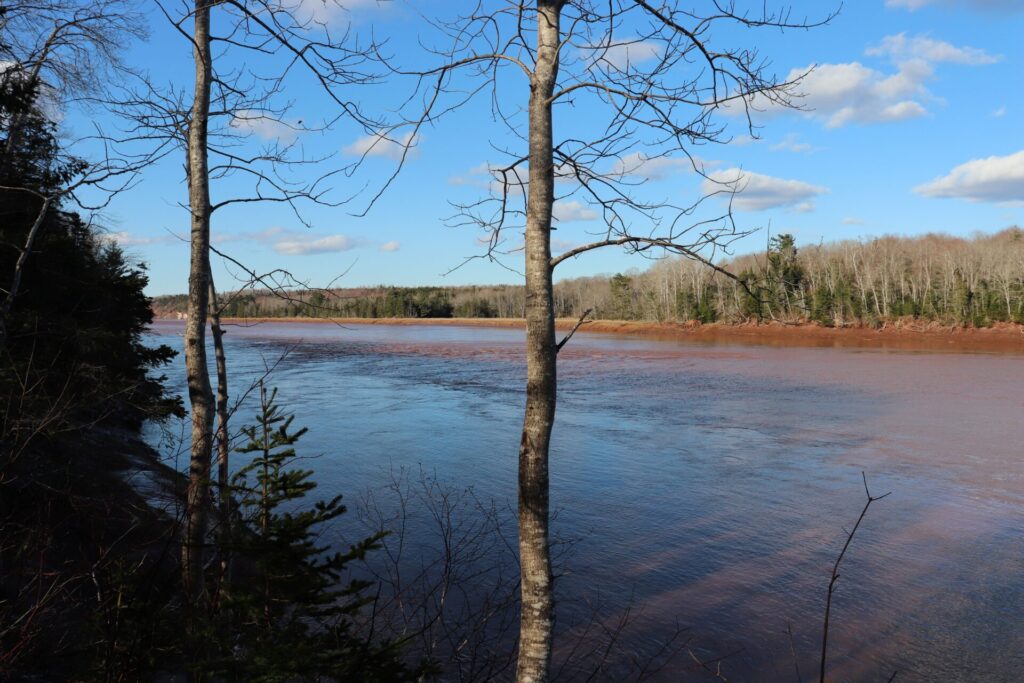
***
Exposure is usually humbling. It’s painful and difficult to discover the dump that’s been killing the trees, the tortuous history, the inept architecture that’s causing one’s body or world to suffer. To face that collapse.
This winter has felt like an exposure on a collective level also. I never thought to see world leaders engage in such reckless brinkmanship between nuclear powers, to hear apparently sane people, in government and media, call for more war, even nuclear strikes. In the face of runaway AI, similarly, we see an almost witless inability to decelerate, step back, consider. When mass exploitation, destruction and disconnection from the earth have been normalized as the means of living for so long, we are in a kind of hypnosis. It’s painful to see – and urgent that we do.
What would repatterning look like at the collective level? I know it’s possible. I imagine it like a gradual pivoting: looking down, looking around, looking within. What do we want? Beautiful lives in a beautiful world. The world’s always been beautiful, so what’s in the way? Only us.
In the gravel and garbage along the road, Coltsfoot is blooming.
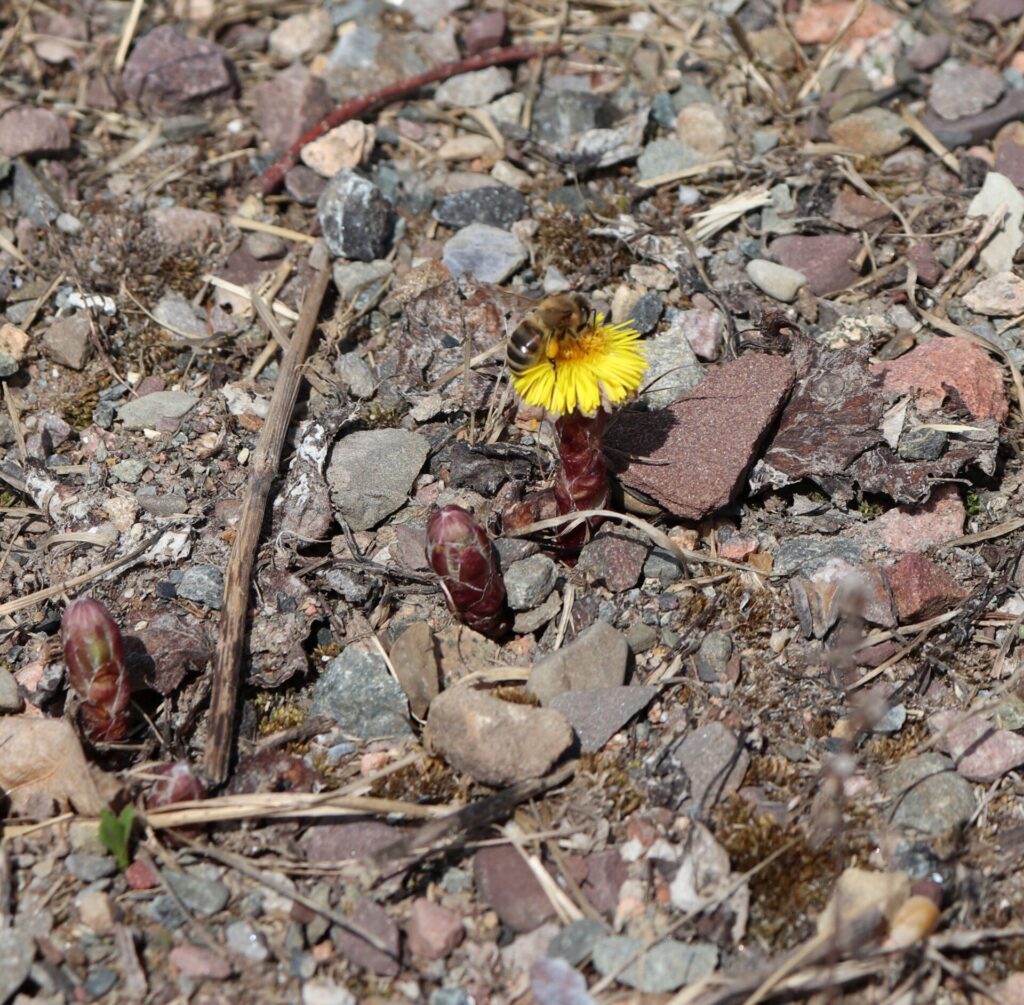
This essay is the fifth instalment in a series about my experiences living with the land in rural Nova Scotia. The series began August 1, 2022. New essays will appear approximately every six-eight weeks for one year . Thank you for reading and subscribing.
